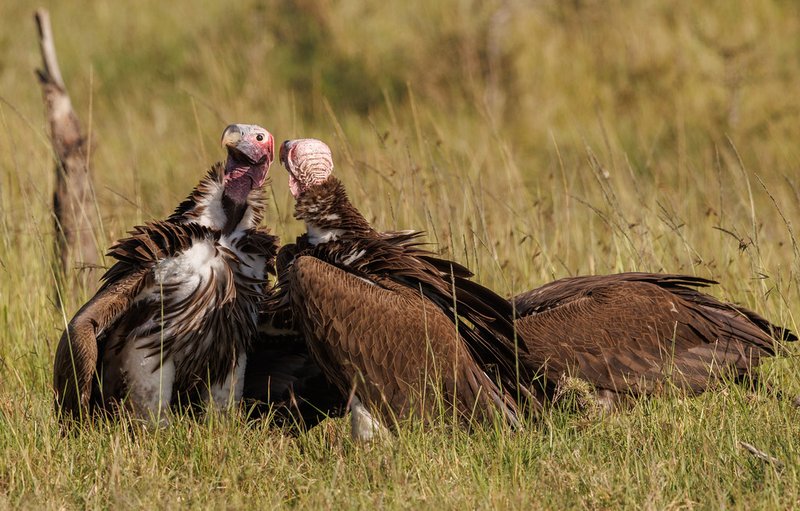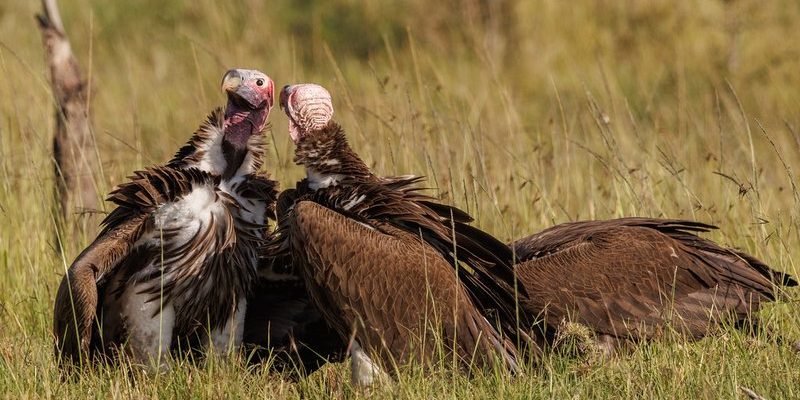
Vultures, with their bald heads and sturdy bodies, might not have the charm of more glamorous birds, but their courtship rituals are anything but dull. These birds are surprisingly social and engage in complex behaviors that can help you appreciate them a little more. As they navigate the intricacies of courtship, vultures display a mix of aerial acrobatics, vocalizations, and even some rather entertaining ground displays. If you’ve ever wondered how these scavengers woo their mates, this article will take you through the ins and outs of vulture courtship and mating rituals.
Understanding Vulture Courtship
Vultures don’t engage in courtship the way songbirds do, with elaborate songs or colorful displays. Instead, their courtship rituals are all about building connections and establishing bonds. The process usually begins when a male vulture sees a potential mate. Here’s the thing: they often engage in aerial displays, where the male performs graceful flight maneuvers to show off his strength and agility. Imagine soaring through the sky with confidence—this aerial dance is crucial for attracting a partner.
Once a male spots a female he likes, he might approach her with a display that includes flapping his wings and circling her in the air. This isn’t just for show; it signifies his fitness as a mate. Vultures are keen on choosing partners who are healthy and strong, as this increases the chances of healthy offspring. You might be wondering how they communicate during these displays. Vultures also use a combination of body language and vocalizations, including hisses and grunts, to express their interest and assertiveness.
The Importance of Rituals in Vulture Mating
Rituals are a vital part of vulture mating. After the initial aerial displays, vultures often engage in a series of ground rituals to further solidify their bond. During these displays, males and females might perform a “feather preening” session, where they take turns grooming each other. This act might seem simple, but it’s crucial for building trust and intimacy between partners. You can think of it as an icebreaker—helping them get to know each other better while reinforcing their bond.
Another common ground ritual involves mutual bill-clacking, where vultures touch their beaks together. This behavior is like a handshake in the bird world, signifying acceptance and affection. It’s a sweet and tender moment that helps strengthen their partnership. After these rituals, vultures usually pair up and begin mating, which can be a quick process. Once courtship is successful, they are often seen together, foraging and nurturing their bond further.
Vulture Mating: The Next Step
Once vultures have established a bond through their courtship rituals, they go on to mate. Mating can occur in various locations, from high cliffs to open savannahs, depending on the vulture species. The actual mating process is rather straightforward and can happen quickly, often lasting only a few seconds. This quick encounter is all about efficiency, allowing them to go back to their vital scavenging routines.
After mating, the female vulture will lay eggs, usually in a secluded area to reduce the risk from predators. Vultures tend to be monogamous, often forming lifelong partnerships. It’s touching to see how they take turns incubating the eggs and caring for their young. Both parents share the responsibilities, which speaks to the strength of their bond formed during those initial courtship rituals.
Building a Nest: Vulture Parenting
Once the eggs are laid, vultures focus on creating a safe and comfortable nest. They typically look for ledges or hollowed trees for nesting sites. Unlike other birds that use twigs and leaves, vultures may use stones or debris to protect their eggs. This resourcefulness shows how adaptable these birds are, even in the sometimes harsh environments they inhabit.
The incubation period usually lasts about 50 to 60 days. During this time, both parents take turns keeping the eggs warm. Honestly, it’s pretty heartwarming to watch them work together. Once the chicks hatch, they’re quite helpless and rely heavily on their parents for food. Vultures are known to bring back food—usually carrion—once the chicks are older and ready to eat solid food.
Challenges in Vulture Courtship and Mating
Vultures face numerous challenges in their courtship and mating rituals. Habitat destruction, poisoning, and declining food sources are just a few obstacles they encounter. When their environments change, it can affect their ability to find mates and raise successful offspring. If you think about it, vultures have a tough job; not only do they need to attract partners, but they also must secure a safe environment for their young.
Another significant threat to vultures comes from hunting and poaching, which impacts not only their population but also their mating success. Fewer vultures mean fewer opportunities for successful courtship and mating, creating a cycle that can lead to a decline in their overall numbers. Conservation efforts are essential to help protect these fascinating birds and ensure they can continue their rituals for generations to come.
The Beauty of Vulture Relationships
Despite their somewhat grim reputation, vultures display an incredible level of loyalty and care toward their partners. They often return to the same nesting sites year after year, reinforcing their bond. This behavior adds to the beauty of their courtship and mating rituals. Watching vultures interact can help shift the perception of these birds from mere scavengers to complex creatures with rich social lives.
Let’s not forget the social aspect of vultures. They often gather in groups, not just for mating but also to forage together. Their communal nature makes them more resilient in the wild, as they can share information about food sources and safety. These dynamics add another layer to their courtship rituals, as social connections can strengthen the bonds with their mates.
Vultures may not fit the traditional mold of charming mates, but their courtship and mating rituals reveal a fascinating side of their lives. From aerial displays to ground rituals, these birds have honed impressive methods for finding partners and raising young. By understanding the complexities of vulture behavior, we gain a greater appreciation for their role in the ecosystem and the challenges they face.
As we continue to learn about these remarkable birds, let’s embrace their unconventional beauty and unique social structures. Vultures are more than just scavengers; they are a testament to resilience, adaptability, and the intricate dance of life. So, the next time you spot a vulture soaring overhead, take a moment to consider the courtship rituals that lie behind their powerful wings.

